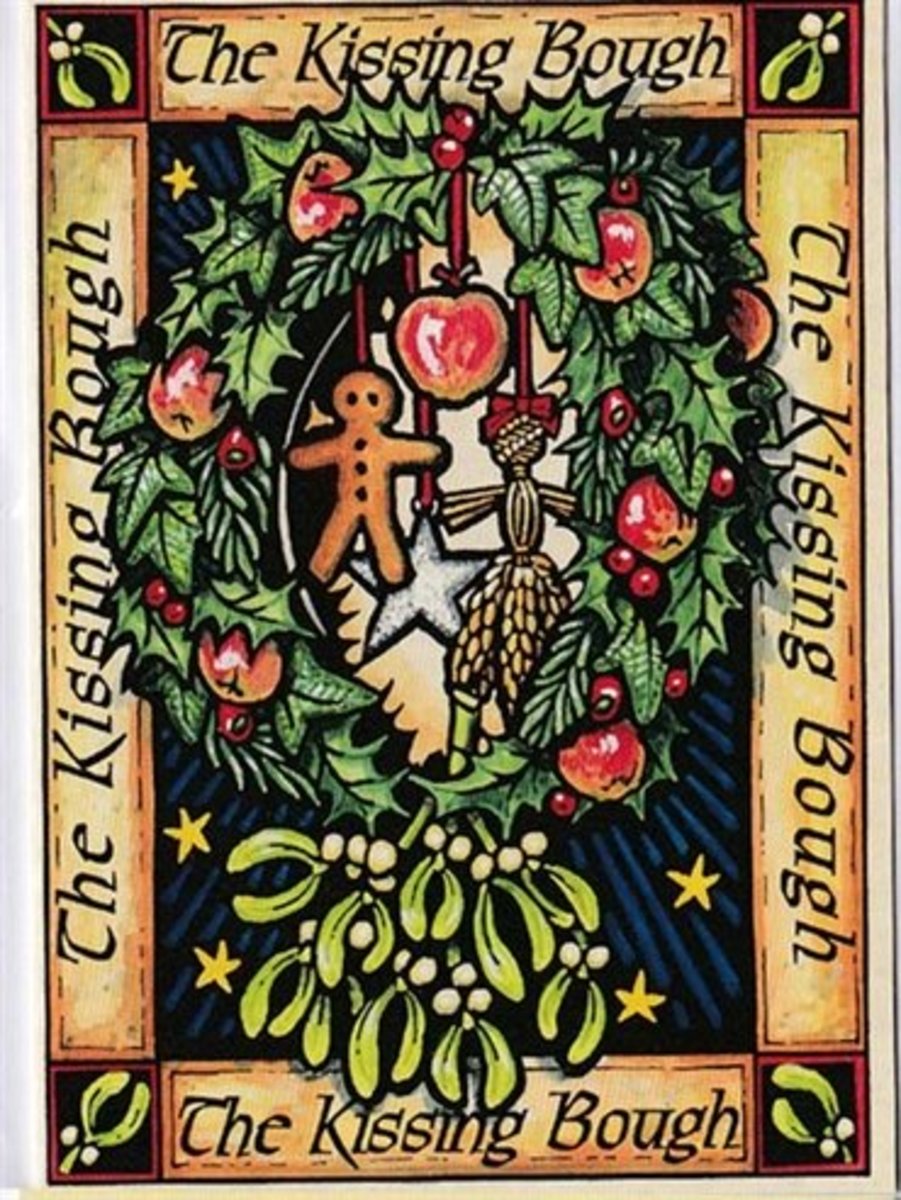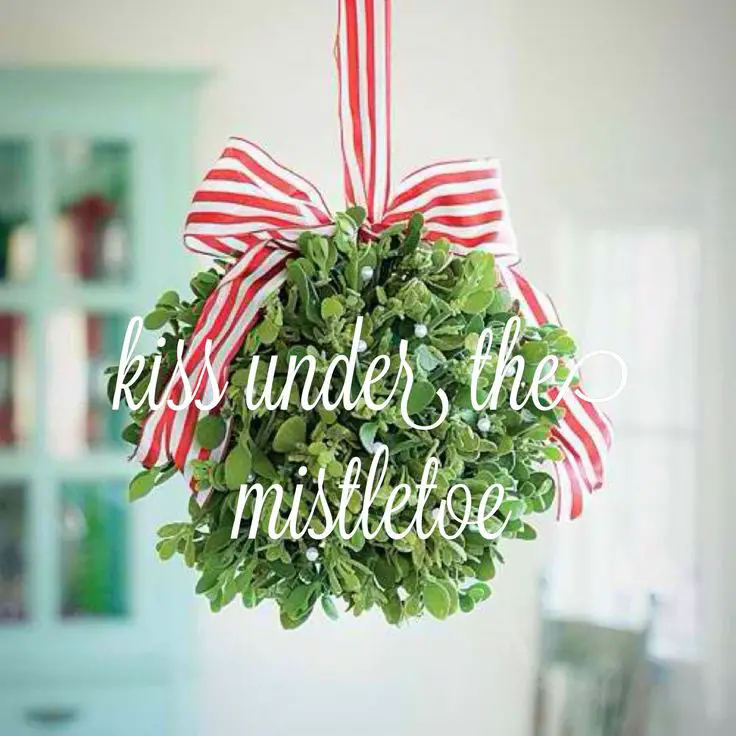The Enigmatic Kiss of Mistletoe: Exploring the Symbolism and History of a Festive Tradition
Related Articles: The Enigmatic Kiss of Mistletoe: Exploring the Symbolism and History of a Festive Tradition
Introduction
In this auspicious occasion, we are delighted to delve into the intriguing topic related to The Enigmatic Kiss of Mistletoe: Exploring the Symbolism and History of a Festive Tradition. Let’s weave interesting information and offer fresh perspectives to the readers.
Table of Content
The Enigmatic Kiss of Mistletoe: Exploring the Symbolism and History of a Festive Tradition

The hanging sprigs of green amidst the holiday decorations, often adorned with a shower of silver or gold, are more than just a festive adornment. Mistletoe, with its rich history and enduring symbolism, has become a cornerstone of Christmas traditions worldwide.
From Ancient Origins to Festive Symbolism:
The origins of mistletoe’s association with the Christmas season can be traced back to ancient Celtic and Germanic cultures. In these societies, the plant held significant spiritual and medicinal value.
- Ancient Celtic Beliefs: Mistletoe, known as "all heal" in Old English, was believed to possess magical properties. The Druids, the Celtic priests, held it sacred and would cut it with a golden sickle during their winter solstice ceremonies. They believed mistletoe, a plant that thrived even in the depths of winter, held the power to ward off evil spirits and promote fertility.
- Norse Mythology: In Norse mythology, the plant was associated with the god Baldr, the god of light and joy. Baldr’s death, a tragedy brought about by Loki, was reversed through the use of mistletoe. This story reinforces the plant’s connection to life, rebirth, and the triumph of good over evil.
- Christian Tradition: The transition of mistletoe into a Christian symbol is believed to have occurred during the Middle Ages. The plant’s association with peace and reconciliation was woven into Christian narratives, with some believing it represented the cross on which Jesus Christ was crucified.
The Evolution of the Mistletoe Kiss:
The tradition of kissing under the mistletoe, a practice now deeply ingrained in Christmas festivities, emerged in the 18th century. Its exact origin remains unclear, but several theories offer plausible explanations:
- A Romance-Fueled Ritual: Some believe the custom evolved from the ancient Celtic belief that mistletoe could promote fertility. This association, combined with the plant’s symbolic connection to peace and reconciliation, may have led to the custom of couples kissing under its branches.
- A Game of Chance: Another theory suggests that the mistletoe kiss emerged as a playful game, a way for young men to express their affection for women in a socially acceptable manner. This practice, similar to other festive traditions, added a touch of excitement and anticipation to the Christmas season.
The Modern Significance of Mistletoe:
Today, the mistletoe kiss remains a beloved Christmas tradition. It symbolizes love, peace, and good fortune, adding a touch of romance and merriment to holiday gatherings. The practice has transcended its historical roots, becoming a symbol of celebration and togetherness.
Beyond the Kiss: Other Mistletoe Traditions:
While the mistletoe kiss is the most well-known tradition associated with the plant, several other practices have developed over time:
- Decorative Element: Mistletoe is widely used as a decorative element during the Christmas season. Its evergreen foliage, often adorned with berries or ribbons, adds a touch of festive charm to homes and workplaces.
- Gift Giving: In some cultures, mistletoe is associated with gift-giving. The practice of exchanging gifts under the mistletoe adds a touch of magic and surprise to the holiday season.
- Folklore and Superstitions: Many folklore traditions and superstitions are associated with mistletoe. Some believe that a sprig of mistletoe placed beneath a pillow can induce prophetic dreams, while others believe that the plant can ward off evil spirits and bring good luck.
FAQs about Mistletoe:
- Is mistletoe poisonous? Yes, all parts of the mistletoe plant, including the berries, are toxic to humans and animals. While the berries are the most dangerous, all parts of the plant should be handled with caution. It is crucial to keep mistletoe out of reach of children and pets.
- What is the best way to hang mistletoe? Mistletoe is typically hung upside down, symbolizing the plant’s ability to thrive even in the depths of winter. It is usually hung in doorways, hallways, or other areas where people gather.
- What are the different types of mistletoe? There are several species of mistletoe, but the most common type used during the Christmas season is the European mistletoe (Viscum album). Other varieties, such as the American mistletoe (Phoradendron serotinum), are also used in some regions.
- Is mistletoe a parasite? Yes, mistletoe is a parasitic plant. It grows on trees, absorbing nutrients and water from its host. While mistletoe can sometimes weaken or even kill its host tree, it generally does not pose a significant threat to healthy trees.
Tips for Using Mistletoe Safely and Respectfully:
- Choose a safe variety: Ensure that the mistletoe you are using is a safe variety, such as the European mistletoe (Viscum album). Avoid using mistletoe that has been treated with pesticides or herbicides.
- Handle with care: Mistletoe should be handled with care, as all parts of the plant are toxic. Wash your hands thoroughly after handling mistletoe, and keep it out of reach of children and pets.
- Respect cultural sensitivities: While the mistletoe kiss is a popular tradition in many cultures, it is important to be respectful of individual preferences and cultural sensitivities. Not everyone may feel comfortable participating in this tradition.
Conclusion:
Mistletoe, with its rich history and enduring symbolism, remains a cherished part of the Christmas season. From its ancient origins as a sacred plant to its modern association with love, peace, and good fortune, mistletoe continues to weave its magic into the festive spirit. While its history and traditions are fascinating, it is essential to remember that the plant is toxic and should be handled with care. By understanding its significance and observing safety precautions, we can continue to enjoy the magic of mistletoe during the holidays.








Closure
Thus, we hope this article has provided valuable insights into The Enigmatic Kiss of Mistletoe: Exploring the Symbolism and History of a Festive Tradition. We appreciate your attention to our article. See you in our next article!